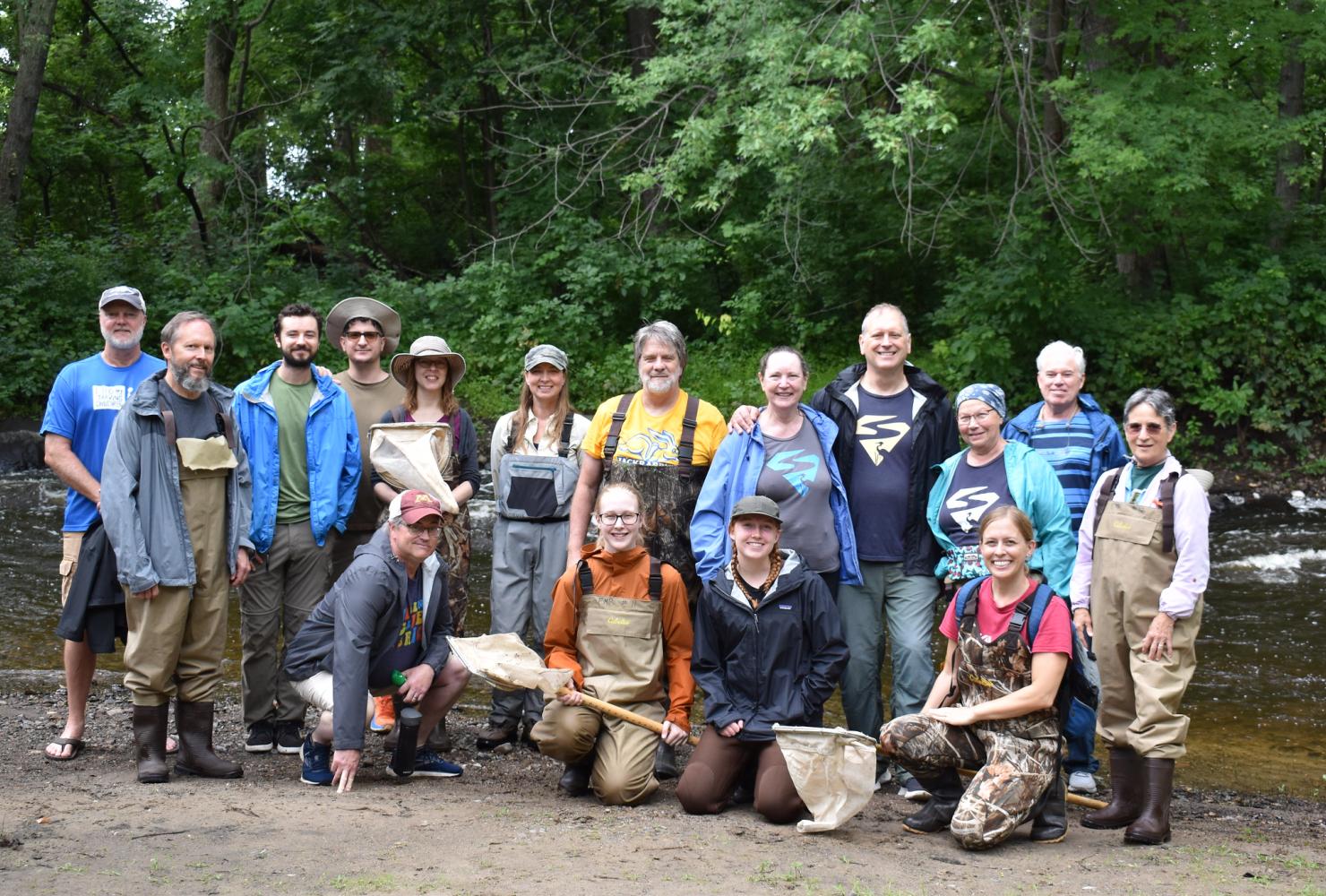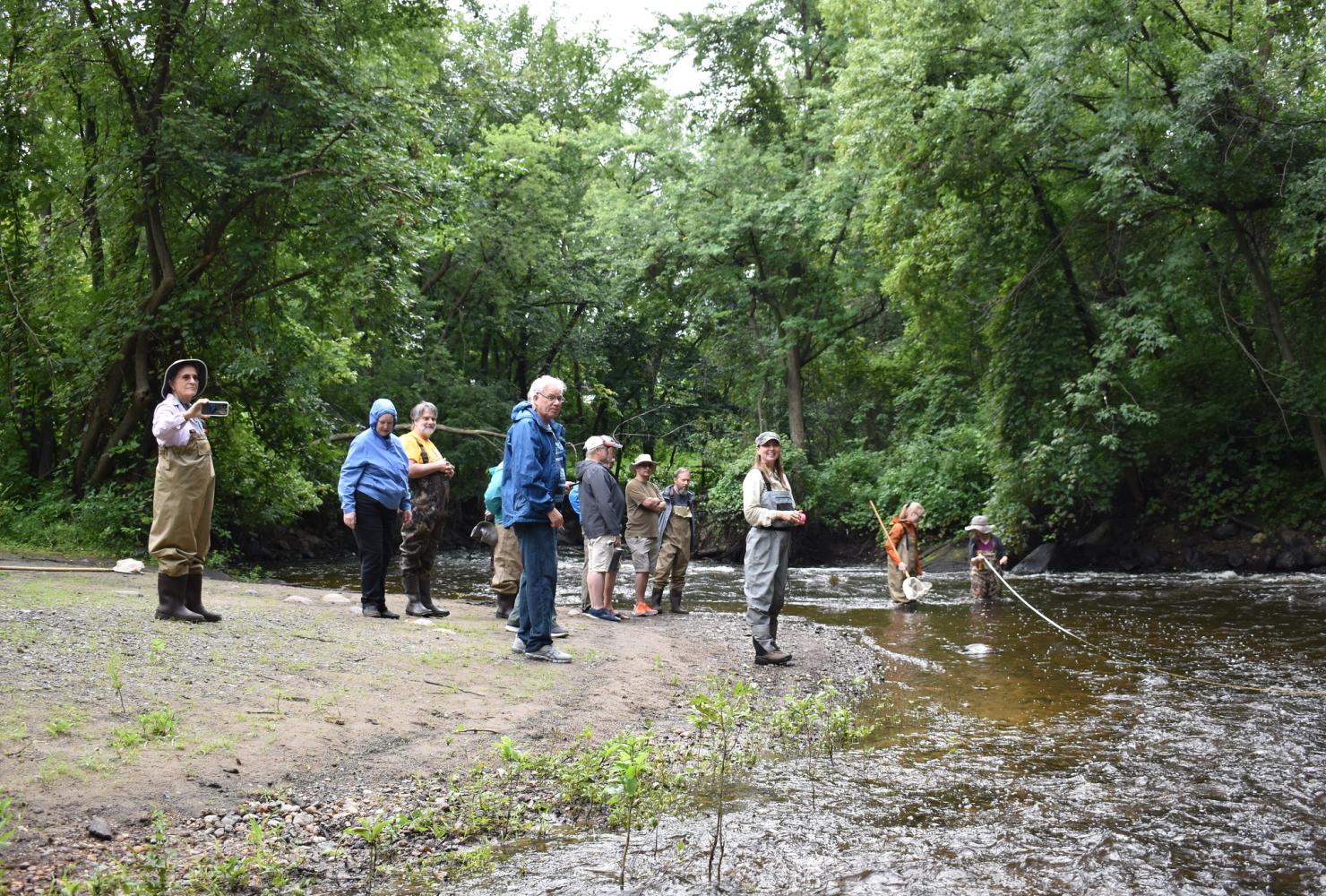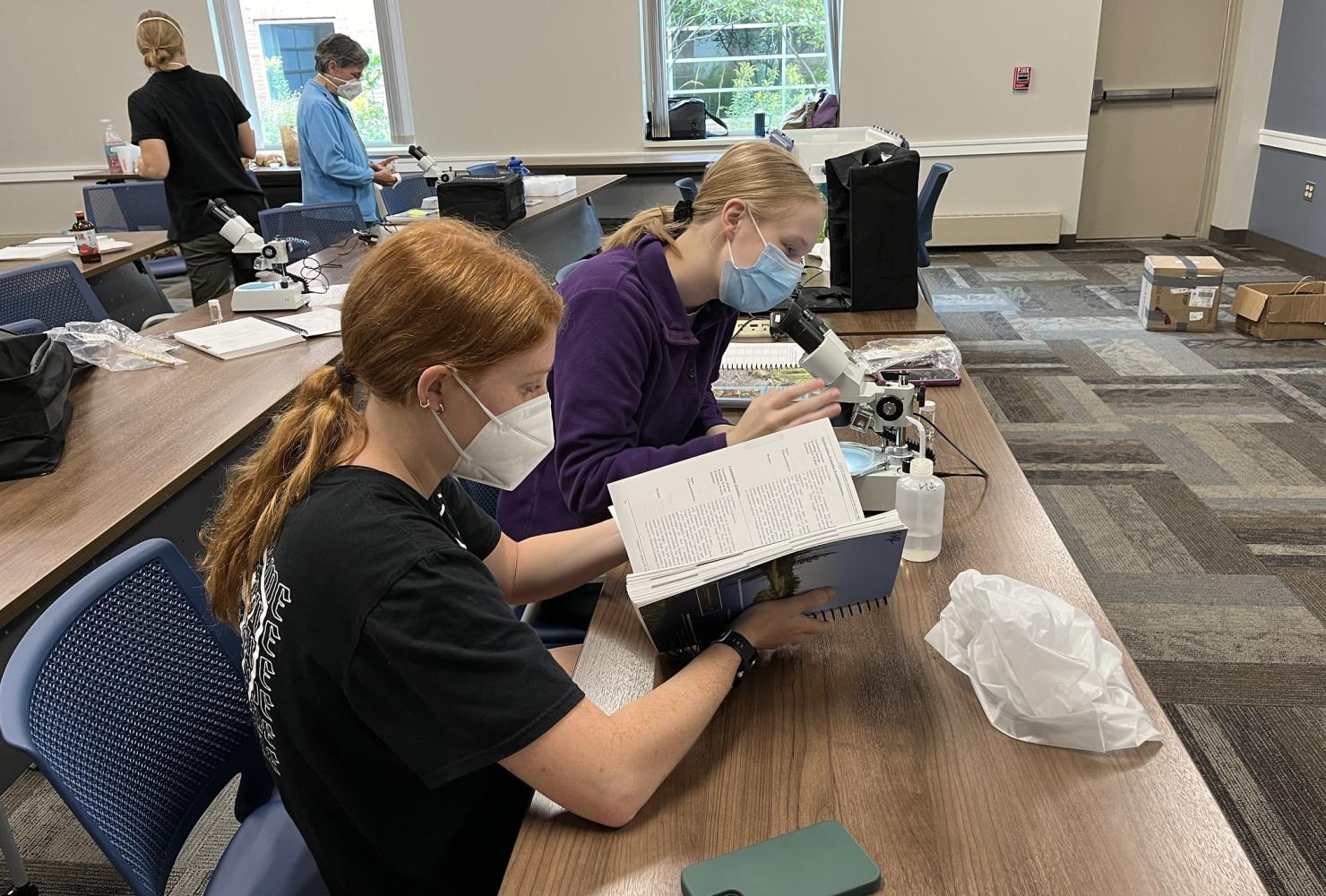Just released: Stream health report from 2024 monitoring
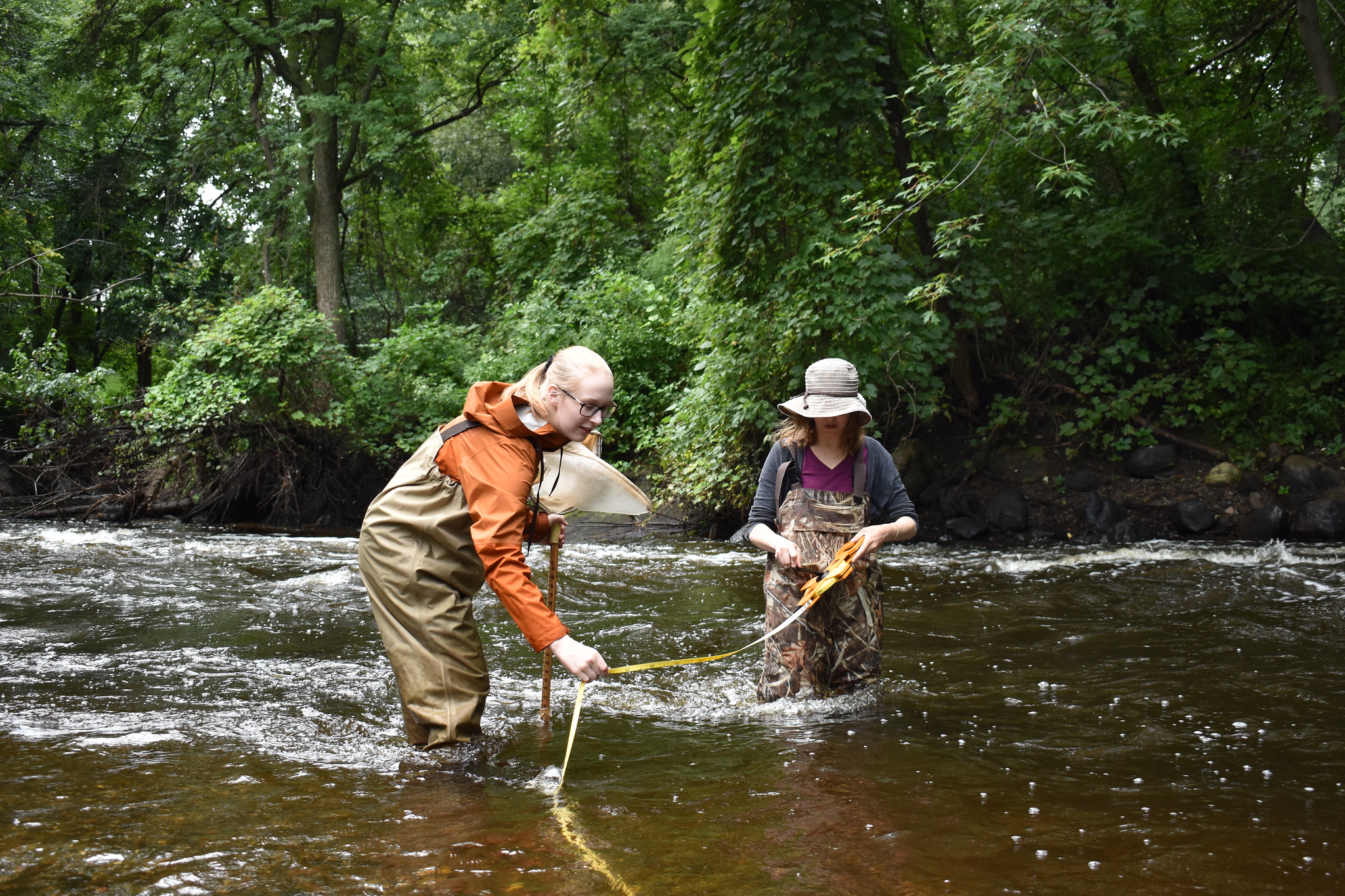
Two volunteer monitors wade into a stream to sample macroinvertebrates. (Photo by Alexandra Jabbarpour for FMR)
Since 2006, FMR volunteers have sampled benthic macroinvertebrates — or small stream-dwelling bugs —and studied these samples to assess water quality. Our Stream Health Evaluation Program (SHEP) volunteers contribute roughly 40 hours between July and November doing this work in the Rice Creek Watershed District.
When the volunteer season wraps up, waders dry and microscopes are returned, biologist Katie Farber conducts data analysis, reviews monitoring accuracy and writes a summary of stream health conclusions for each site.
What the 2024 SHEP results show
Farber calculates a health score based on the findings from nine streams in the Rice Creek watershed just north of the Twin Cities. In this year's report, scores were improving or stable across all nine streams. Only one stream had a decreasing average trend overall, but it still saw an improvement in 2024.
Environmental factors, including water levels, habitat availability or other sources of disturbance in the area, can cause variability from year to year. A vital aspect of SHEP is long-term monitoring. Because SHEP volunteers sample the same nine streams every year, their data provide a more reliable picture of water quality over time, allowing researchers, the public and the watershed district to observe changes and fluctuations.
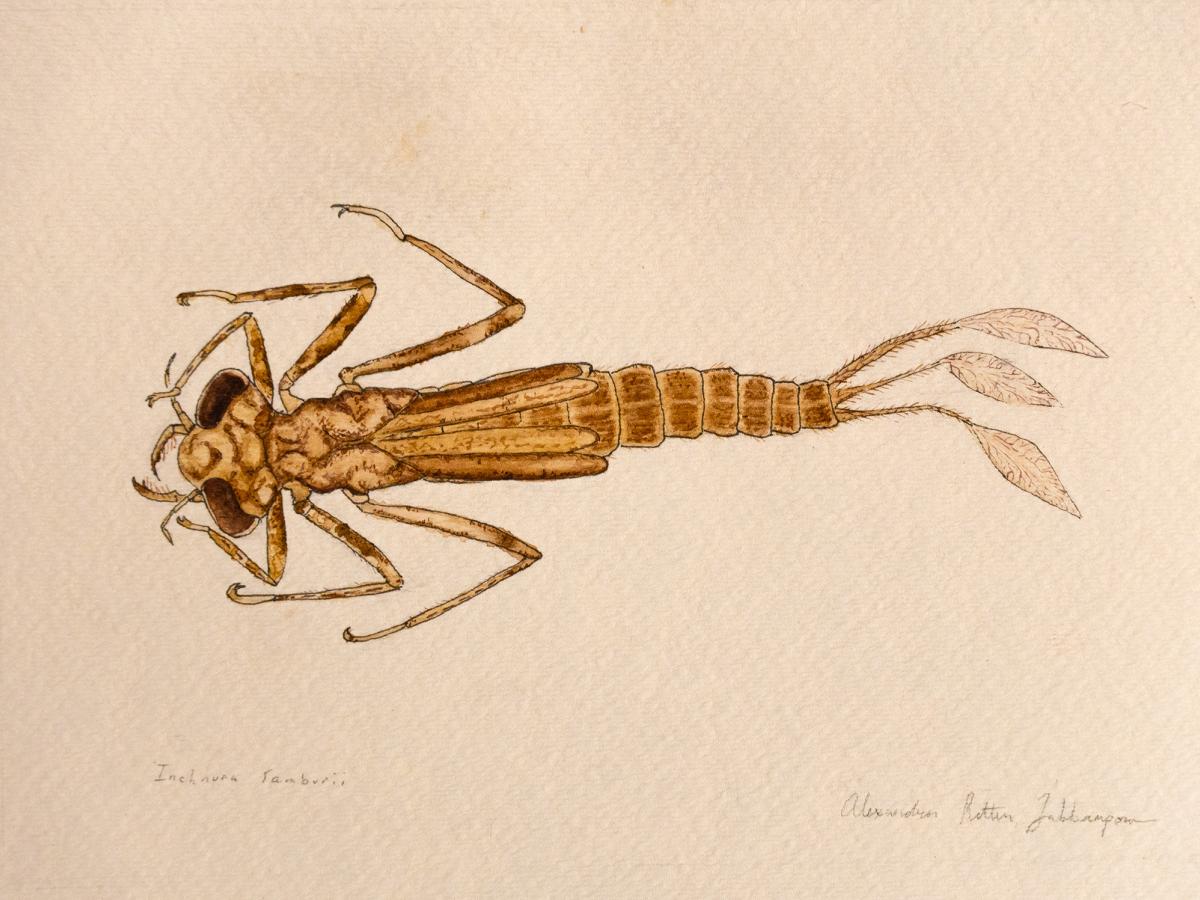
How can aquatic insects help us measure water quality?
Meet three critters our monitoring volunteers sample — and find out what they might mean about stream health.
That long-term monitoring would not be possible without the dedicated and passionate volunteers and team leads, who contribute their time and expertise to the program. Some of these volunteers are going into their 20th season with the program.
Farber found that SHEP teams continued their typical trend of high accuracy, correctly identifying 98%-99% of macroinvertebrates in 2024. That quality makes the SHEP dataset valuable for research and policy.
Check out the full report
Each year, we submit a full report to our partners and funders at the Rice Creek Watershed District. You can read our latest detailed findings in the 2024 SHEP report or see the full archive here.
Thank you volunteers!
Get involved
Our SHEP teams may have a few volunteer openings for 2025. Preference is given to Rice Creek Watershed District residents, who are especially encouraged to apply. (Check this map to see if you live in the watershed.) You can learn more about volunteering here and contact SHEP@fmr.org if you want to sign up.
Project support
SHEP is made possible through funding and support from the Rice Creek Watershed District, our SHEP volunteers and team leads, as well as our longstanding partnership with field biologist Katie Farber of Bolton & Menk, Inc.
